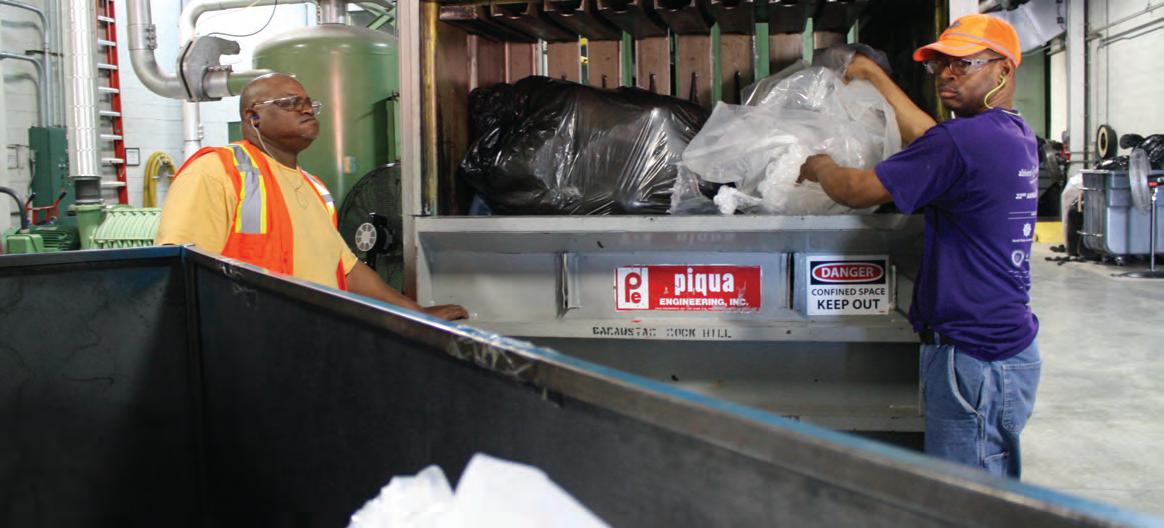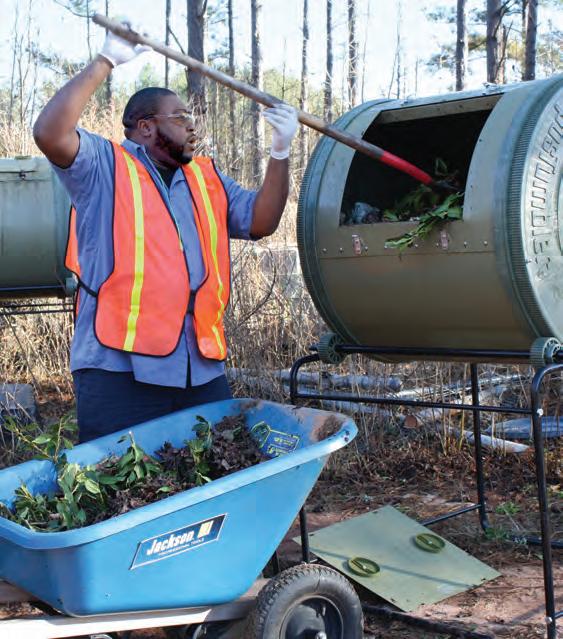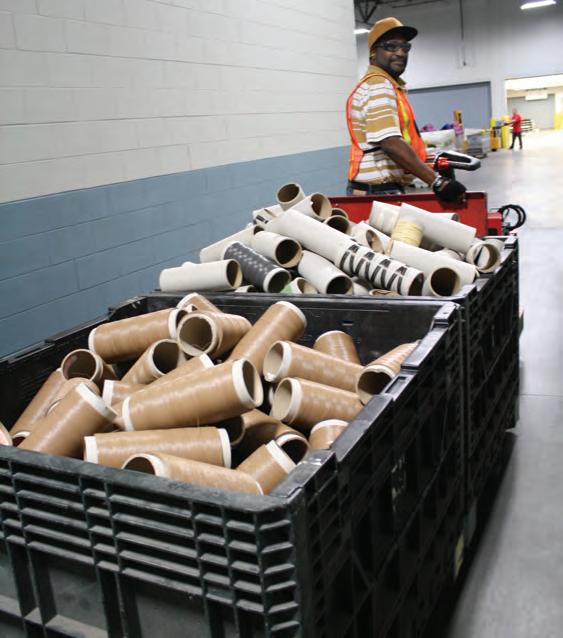
3 minute read
Achieving LandfillFree Operations: A Series of Small Steps
from Raven Issue No. 18
Earlier this year, Glen Raven achieved a milestone in its decades-long commitment to environmental stewardship – all five of the company’s domestic manufacturing centers became landfill free. Plants in Anderson, S.C., Burnsville, N.C., Burlington, N.C. (two locations), and Norlina, N.C., no longer transport any waste materials to area landfills, which is benefitting both the company and local municipal waste authorities.
The achievement of landfill-free operations, which is attainable by virtually any company, was the result of a series of small steps over the past four years. Glen Raven estimates that by eliminating landfill waste at its five domestic manufacturing centers, more than 5.6 million pounds of various materials are now being recycled each year rather than being sent to landfills.
Advertisement
“We recognized that there was unrecovered value in our waste streams at all of our manufacturing centers,” said Randy Blackston, vice president of operations for Glen Raven Custom Fabrics, who spearheaded the landfill-free initiative. “Glen Raven had an economic incentive to make the commitment to landfill-free status in addition to knowing it’s the right thing to do for the environment and for the communities where we do business.”
Based on Glen Raven’s experience, below are the essential components that could be adopted by any organization dedicated to reducing or eliminating its impact on landfills:
• Commitment – The first step in the process is a commitment at the highest level of an organization to reducing landfill wastes. Landfill-free status must be a strategic goal with acommitment of resources. For many organizations, eliminating landfill wastes can turn an expense – landfill fees – into revenue from the sale of recyclable materials.
• Waste identification – The next essential step is to identify all of the elements in an organization’s waste stream, from paper and plastics to raw materials and machine components. This step will provide the basis for a landfill-free plan, including the setting of priorities for which materials to recover first.
• Most valuable first – Materials going to the landfill will vary greatly in their value for recycling, so it’s best to start with the most valuable. For Glen Raven, fiber waste from performance fabrics manufacturing has the greatest value and has been a priority for capture, separation and recycling for many years.
• Collection and separation – Speaking of small steps toward landfill-free status, an essential component is setting up a collection and separation system within an organization. It’s essential that employees can easily deposit waste materials in the right places every day, all day, with little to no additional effort. Keeping materials separated increases their value to recycling partners.
• Recycling partners – Every community is different in terms of the market for recyclable materials. Contact your local chamber of commerce or conduct a Web search to identify area companies that can purchase your recyclable materials. Recruiting valued recycling partners has been a key element in the Glen Raven program.
• Education – There is an abundance of resource materials on recycling and repurposing materials available over the Internet or through trade organizations such as the Industrial Fabrics Association International (IFAI) and its affiliate organizations for awnings (PAMA) and marine fabricators (MFA). Avail yourself of information on best practices in recycling and repurposing.
• Measurement – It’s important that you measure your progress and your results to assure that your landfill-free strategy is financially sustainable. An organized collection system and reliable recycling partners can make this element attainable.

• Employee commitment – Everyone in an organization who touches recyclable materials, which actually means every one, has to be informed about the program and their roles in making it a success. All individuals should understand their own individual waste streams and how to manage them.
• Repurpose and reuse – An important way to reduce an organization’s waste stream is to repurpose and reuse materials that may in the past have ended up in the trash.
Glen Raven’s program includes the reuse of yarn cones, paper tubes and wood pallets multiple times before they are placed into the recycling stream. Awning and marine fabricators may find that remnant fabrics can be made into new items, such as bags.

• Process improvements – Many awning and marine fabricators have found that through process improvements, such as nesting patterns during fabric cutting, they can reduce waste materials and boost profit margins.
• Teamwork and ownership – The quest for landfill-free status affects every individual, so teamwork and ownership of the program at all levels are essential. Start with a core group of dedicated employees who can make the program a top priority on their work agendas.
• Series of small steps – Approach your landfill-free program as a series of small steps. It won’t happen overnight, but it will happen with a plan and continual progress over time.
“Achieving landfill-free status is good business from every angle, including reduced costs and new sources of revenue,” Blackston said. “It can also be a source of pride and sense of achievement for employees who know they are doing everything they can to protect the environment and help make their jobs more secure.”









